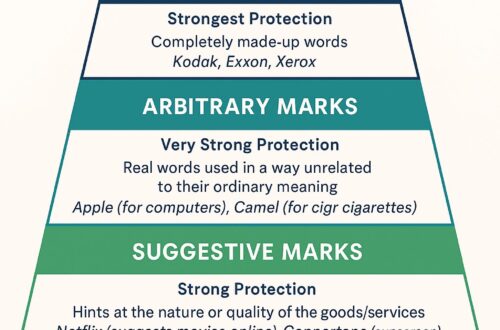The rapid evolution of artificial intelligence (AI) has outpaced traditional intellectual property (IP) frameworks, creating a labyrinth of legal and ethical challenges. From patenting AI models to addressing copyright issues in training data, the AI sector grapples with unique questions that test the boundaries of existing IP laws. As AI systems become more autonomous—designing products, composing music, and even making scientific discoveries—the need for clear IP guidelines has never been more urgent.
Patenting AI models and algorithms is a contentious issue. Unlike traditional inventions, AI systems often rely on complex neural networks and machine learning (ML) techniques that are difficult to define or replicate precisely. This ambiguity has led to debates over what constitutes a “patentable invention” in AI. In 2023, Google filed a patent for a “self-improving language model” that can refine its own outputs without human intervention. The patent office initially rejected the application, arguing that the model’s ability to “invent” on its own made it ineligible for protection. After a lengthy appeal, Google won the patent, setting a precedent that AI systems with specific, human-defined objectives could qualify. However, this ruling remains controversial: critics warn that broad AI patents could stifle competition, as companies like Microsoft and Meta race to patent foundational ML techniques, creating a “patent thicket” that blocks smaller innovators.
Training data, the lifeblood of AI systems, is another IP flashpoint. Most advanced AI models—such as OpenAI’s GPT-4 or MidJourney—are trained on millions of copyrighted texts, images, and videos scraped from the internet. While companies argue that this “fair use” is necessary for technological progress, creators contend that unauthorized use of their work violates copyright law. In 2024, a class-action lawsuit filed by 1,000 authors against Anthropic accused the company of using their books to train its AI without permission, seeking $3 billion in damages. The case hinges on whether training AI constitutes “transformative use”—a key criterion for fair use under U.S. law. Similar lawsuits have been filed against Stability AI (over image training) and Google (over news articles), with outcomes that could reshape how AI companies license data. Some jurisdictions are already taking action: the European Union’s AI Act, set to take effect in 2025, requires AI developers to disclose copyrighted material used in training, forcing greater transparency.
The rise of generative AI—systems that create new content—further complicates copyright. When an AI generates a poem, a logo, or a chemical formula, who owns the rights? Current laws generally grant copyright to human creators, but AI-generated works exist in a legal gray area. In 2023, the U.S. Copyright Office clarified that it would only register AI-generated content if a human author made “substantial human authorship” contributions. This means a novelist using AI to brainstorm plot ideas might own the copyright to the final book, but a poem written entirely by AI cannot be registered. However, this distinction is hard to enforce: an AI-designed logo might require minimal human input, yet the result could be commercially valuable. Companies like Adobe have responded by developing “AI ethics tools” that track human contributions to AI-generated content, helping creators prove authorship if disputes arise.
Open-source AI presents a unique set of IP challenges. Many foundational AI models, such as Meta’s LLaMA, are released under open-source licenses that allow free use and modification—provided users adhere to specific terms. However, enforcing these licenses is difficult, as modified versions of open-source models can be rebranded and sold without proper attribution. In 2022, a startup was sued for releasing a commercial AI chatbot based on LLaMA without complying with Meta’s license, which required disclosing modifications and limiting use to non-commercial purposes. The case highlighted the tension between open innovation and commercialization: while open-source models accelerate AI development, weak enforcement undermines the trust of developers who contribute to these projects. Organizations like the Open Source Initiative are working to update licenses for AI, including clauses that prevent misuse of open models for proprietary gain.
International disparities in AI IP laws add another layer of complexity. China, for example, has emerged as a leader in AI patent filings—accounting for 58% of global AI patents in 2023—with a legal system that prioritizes rapid innovation over strict IP enforcement. This contrasts with the United States, where patent examiners rigorously scrutinize AI applications for novelty. Such differences create opportunities for “IP arbitrage,” where companies file patents in jurisdictions with lenient rules to gain a competitive edge. To address this, the World Intellectual Property Organization (WIPO) launched the Global AI IP Database in 2024, a centralized repository of AI patents and copyright claims designed to reduce inconsistencies in global enforcement.
The future of AI IP will likely involve hybrid solutions: balancing strong protections for innovators with flexibility to foster collaboration. Some experts propose “AI IP pools”—collective licensing arrangements where companies share patents to avoid litigation, similar to how mobile phone manufacturers share 5G technology patents. Others advocate for shorter patent terms for AI inventions, ensuring that breakthroughs enter the public domain faster to spur further innovation. Whatever the solution, one thing is clear: AI’s IP challenges cannot be solved by tweaking old laws—they require a fundamental reimagining of how we reward and protect innovation in a world where machines are increasingly creative partners.
